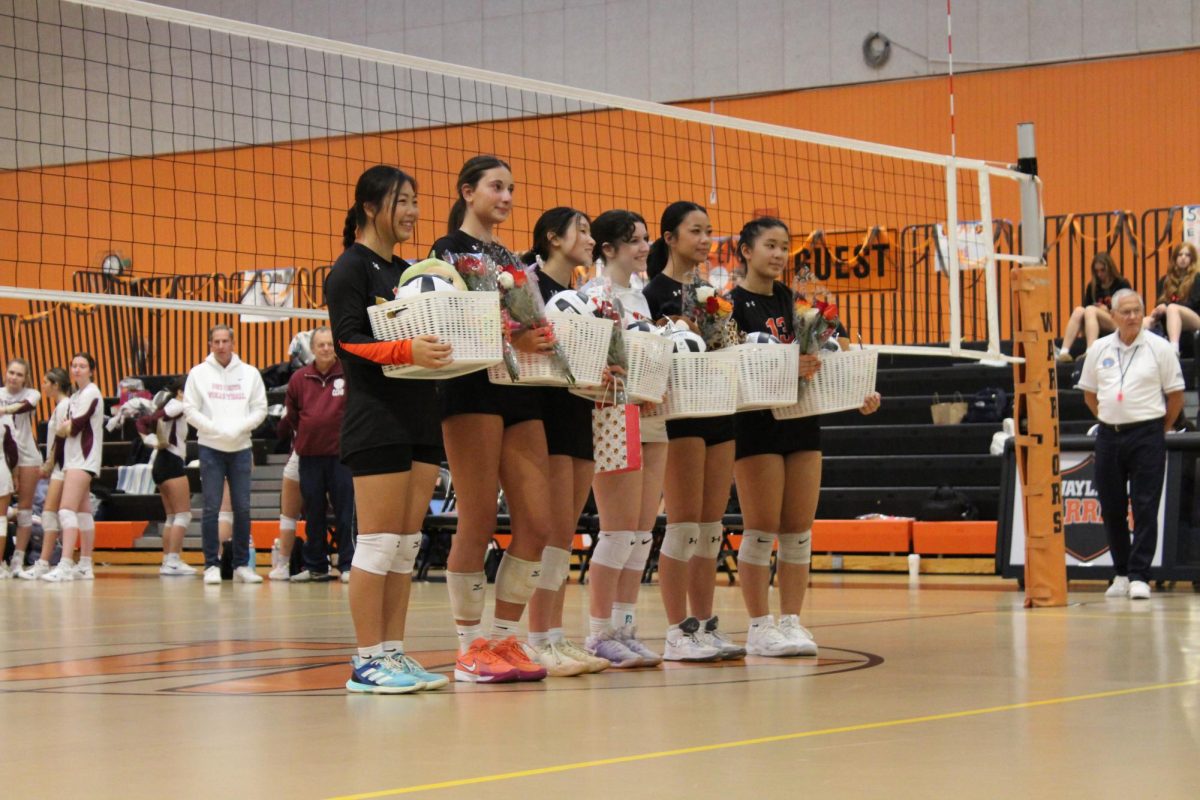Kyle’s Column: Midterms
In the latest installment of Kyle’s Column, WSPN’s Opinions Editor Kyle Chen reflects upon the lessons that come with having a cold.
January 22, 2018
A student sits on the edge of a chair with his head down, staring at the test on his desk as if the intensity of his glare would somehow miraculously bubble in the answer sheet for him. His brain races as he twirls his pencil restlessly.
In less than 12 hours, I will be standing (or should I say sitting) in that student’s shoes. Midterms are here, and my fellow students and I at Wayland High School are reaching peak stress levels on Midterm Eve.
Now, I don’t know if this is a common affliction among my peers at WHS, but I happen to be one of the worst studiers you’ll ever meet. I know, I know – as a high schooler, I should have realized by now that studying is key to success, but sitting at a desk for long periods of time, staring at a textbook or poring over notes just isn’t my cup of tea. So, after an hour of attempting to cram the principles of enthalpy into my head, I took one of my many study breaks, scrolling through my Instagram feed, wistfully gazing at pictures of my friends from other states, many of whom left behind the stress of midterm examinations long ago.
Many high schools (and universities) in America give their cumulative assessments for the first half of the year sometime in December, before Christmas break, which allows students to truly relax and enjoy their holiday season without the nagging shadow of midterms approaching in the back of their minds. Why does Wayland High School drag out testing until after the new year? Why can’t we just get it out of the way before the holiday recess, so that we can have a truly carefree and enjoyable vacation?
Scheduling midterms after Christmas break is basically the same as what I do for most of my English papers—delaying the inevitable. Pushing the exams back doesn’t change the fact that we still have to take the tests – just like how procrastinating on writing the essay doesn’t change the fact that I have to write it before the day it’s due. Sure, having the exams in January gives us some temporary relief, but is this short-term respite truly worth it?
One thing teachers and administrators may argue is that having midterms in January gives teachers time to finish teaching the curriculum they need to get to; after all, schools in New England start almost a month later than schools in some parts of the country, like California, that start in early- to mid- August.
However, I believe that giving the exams in January doesn’t help much, and actually only makes matters worse. By interposing a one-week vacation between the first half of the school year and midterms, an awkward divide is created in students’ minds in the knowledge they learn for the first semester.
Over vacation, many students forget some of the content they learn in the first half of the year, but instead of allowing sufficient time to review and recall the knowledge from before, teachers cram new topics and information into the students’ heads within the meager three-week margin between the resumption of classes and the midyear exams. Going into the tests, kids are struggling to remember the stuff teachers taught them eons ago at the beginning of the year while also trying to get a solid grasp on the new knowledge hastily imparted on them since after classes resumed. Does that really sound like an efficient way of learning?
As the great sage Confucius once said, “He who learns, but does not think, is lost.” As a result of the poor placement of midterms in the year, students end up learning only fleetingly about many of the topics they are taught – and they don’t have nearly enough time to truly think about and digest the information they are given.
Opinion articles written by staff members represent their personal views. The opinions expressed do not necessarily represent WSPN as a publication.



























